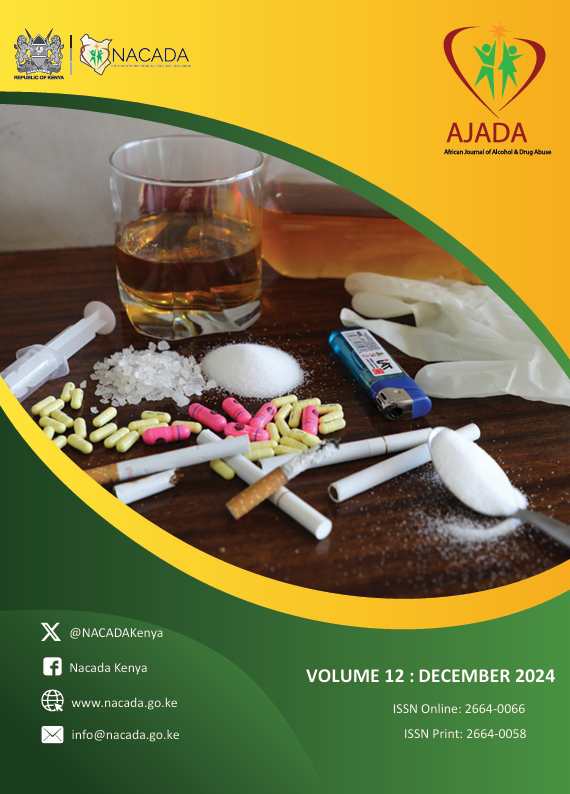Substance use among adolescents in sub-saharan Africa: A narrative review of epidemiological data
DOI:
https://doi.org/10.4314/ajada.v12i1.5Keywords:
Sub-Saharan Africa,, adolescent substance use, epidemiological data, sub regionAbstract
The adolescent population in sub-Saharan Africa is projected to grow significantly, presenting both opportunities and challenges. Increasing rates of substance use among youth pose a significant public health concern, potentially exacerbating morbidity, mortality, and risky behaviors. While previous studies have examined substance use in sub-Saharan Africa, they often focused on individual countries or combined data across regions, overlooking shared sociocultural contexts within subregions. This narrative review analyzed epidemiological data from 60 studies conducted between 2014 and 2024,examining substance use patterns among adolescents under 20 years across sub-Saharan Africa’s four sub-regions. The review incorporated academic literature, intergovernmental reports, and local partners’ insights covering 29 countries through 19 demographic and health surveys, 17 global youth tobacco surveys, seven global school-based student health surveys, and 16 cross-sectional studies. Findings reveal substantial sub regional variations in substance use patterns, with the highest rates documented in Southern Africa (up to 44.6% for any substance use) and Western Africa (31.2-32.9%). Eastern Africa demonstrated varied patterns, with alcohol use reaching 50.2% in some countries. Central Africa, while showing more consistent patterns, had limited data primarily focused on tobacco use (ranging from 9.2% to 14.1%). Gender disparities were evident across all sub-regions, with males consistently showing higher usage rates than females. The review identified critical gaps in comprehensive substance use data, particularly in Central Africa, and notable disparities between national and regional studies' findings. This sub-regional approach, which acknowledges shared sociocultural contexts among neighboring countries, provides more nuanced insights than previous country-specific studies. These findings highlight the need for culturally grounded, evidence-based prevention programs tailored to specific contexts, emphasizing the importance of collaborative efforts with local partners in developing targeted prevention strategies that address the unique challenges faced by adolescents in sub-Saharan Africa.
Downloads
Published
Issue
Section
License
Copyright (c) 2024 Flavio F. Marsiglia, Chao-Kai Huang, James Herbert Williams, Samuel Munyuwiny, Lefate Makunyane, Daniel Ikenna Molobe, Rachel Freeman, Stephen S. Kulis, Ijeoma Ogbonnaya, Elizabeth Lightfoot

This work is licensed under a Creative Commons Attribution-NonCommercial-ShareAlike 4.0 International License.


